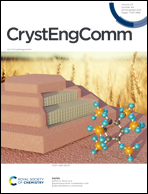Hybrid density functional theory for the stability and electronic properties of Fe-doped cluster defects in KDP crystal
Abstract
Defects have always been considered as one of the important factors to reduce the laser damage thresholds of potassium dihydrogen phosphate (KH2PO4, KDP). However, crystal defects often do not exist singly but combine with each other to form clusters. In this study, hybrid density functional theory was used to investigate how the cluster defects affect the damage threshold of KDP crystals. The concentration of oxygen vacancy defects has little effect on the electronic structure, only influencing the torsion of the surrounding bond. Moreover, the cluster defects comprising FeP2− + VO2+ could cause a slight local variation of the lattice for KDP crystals. The defect state induced by FeP2− defect could introduce three defect states at 0.5, 1.2 and 4.0 eV, respectively. It could also introduce absorption peaks at around 200 nm in the yz plane. When the FeP2− + VO2+ cluster defect forms, the defect state shifts to CBM at about 1.0 eV as a whole due to electron depletion and accumulation for the H atom and its attached O atom. It could have an influence on electronic and optical properties by strengthening the charge transfer along the direction of x in the crystals. The calculation results could provide a good suggestion to improve the quality of the crystals by decreasing the concentration of the cluster defects in KDP crystal.



 Please wait while we load your content...
Please wait while we load your content...